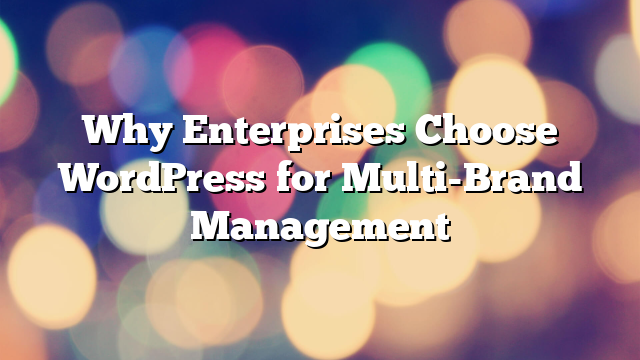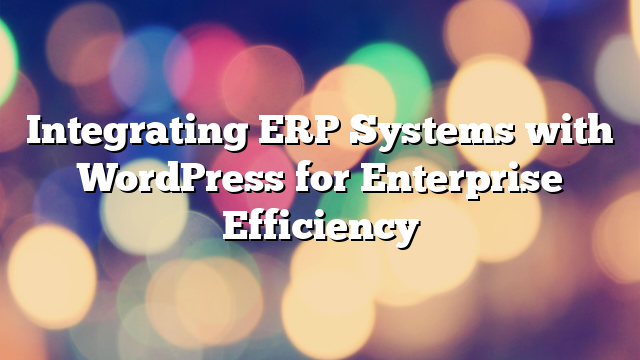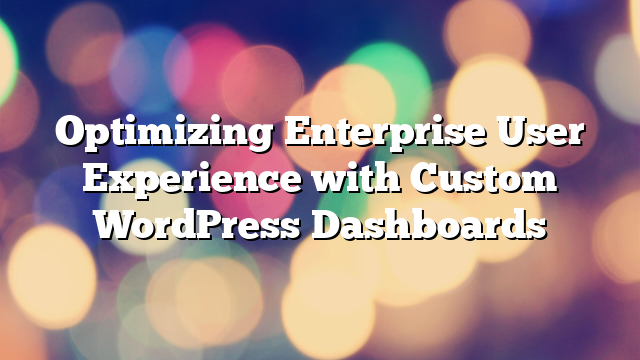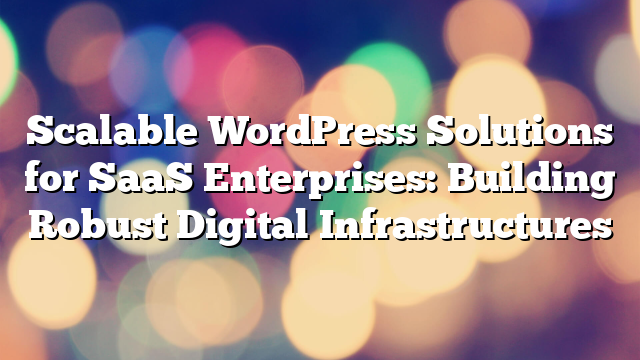Why Enterprises Choose WordPress for Multi-Brand Management
11.04.2025

Managing Multiple Brands in a Unified System
Enterprise organizations often operate multiple brands, each with unique identities, audiences, and content strategies. Managing these brands efficiently requires a centralized yet flexible digital infrastructure. WordPress, with its native Multisite feature and powerful customization capabilities, has become the go-to solution for enterprises looking to scale brand management without sacrificing autonomy or quality.
What Makes WordPress Ideal for Multi-Brand Operations
WordPress Multisite allows businesses to run several websites from a single WordPress installation. Each site can have its own domain, design, plugins, and content managers, while still being controlled from a central admin dashboard. This structure offers the perfect balance between centralized governance and decentralized creativity—an essential setup for enterprises managing multiple brands or regional sites.
Consistent Branding with Room for Flexibility
With shared themes and component libraries, enterprises can enforce brand consistency across all sites while allowing for individual customization. Design systems and reusable blocks make it easy to maintain visual standards, even when different teams manage content. WordPress empowers brand leads to work independently, while the organization maintains full control over guidelines and functionality.
Custom Roles and User Permissions
In multi-brand environments, access control is critical. WordPress supports granular user roles and permissions, allowing enterprises to assign site-specific roles for editors, marketers, and developers. This ensures each team only sees and works with the content and tools relevant to their brand, reducing complexity and minimizing risks.
Scalable Content Workflows Across Brands
WordPress supports advanced editorial workflows, content scheduling, and revision history—features that become even more powerful in a Multisite setup. Teams can replicate content strategies across brands, reuse content assets, and speed up time to market. Enterprise plugins like Edit Flow and PublishPress provide even more structure to large-scale publishing operations.
Centralized Updates and Security Management
Security is non-negotiable in enterprise environments. With WordPress Multisite, updates to themes, plugins, and core files can be managed centrally, ensuring consistency and reducing vulnerabilities across the brand network. Enterprises can also implement monitoring, firewalls, and backup strategies from a single point of control, saving time and resources.
SEO and Performance Optimization at Scale
Each brand site in a Multisite network can have its own SEO strategy while benefiting from centralized performance optimizations. Shared CDN configurations, caching solutions, and lightweight themes contribute to fast, efficient experiences for all users. Tools like Yoast SEO and custom sitemaps ensure every site maintains strong search engine visibility.
Real-World Applications of WordPress Multi-Brand Networks
From international corporations managing regional websites to franchise systems with independently run locations, WordPress Multisite is proving its value across industries. Publishing companies, universities, and eCommerce conglomerates all leverage the platform to simplify complex web operations while empowering individual stakeholders.
Conclusion
For enterprises overseeing multiple brands, WordPress offers unmatched flexibility, scalability, and control. Its Multisite architecture, combined with enterprise-grade tools and custom workflows, makes it possible to grow and govern a diverse digital ecosystem efficiently. When executed correctly, it becomes a powerful foundation for long-term digital success.
Looking to streamline your brand portfolio with WordPress? Explore our enterprise solutions or schedule a consultation today.



